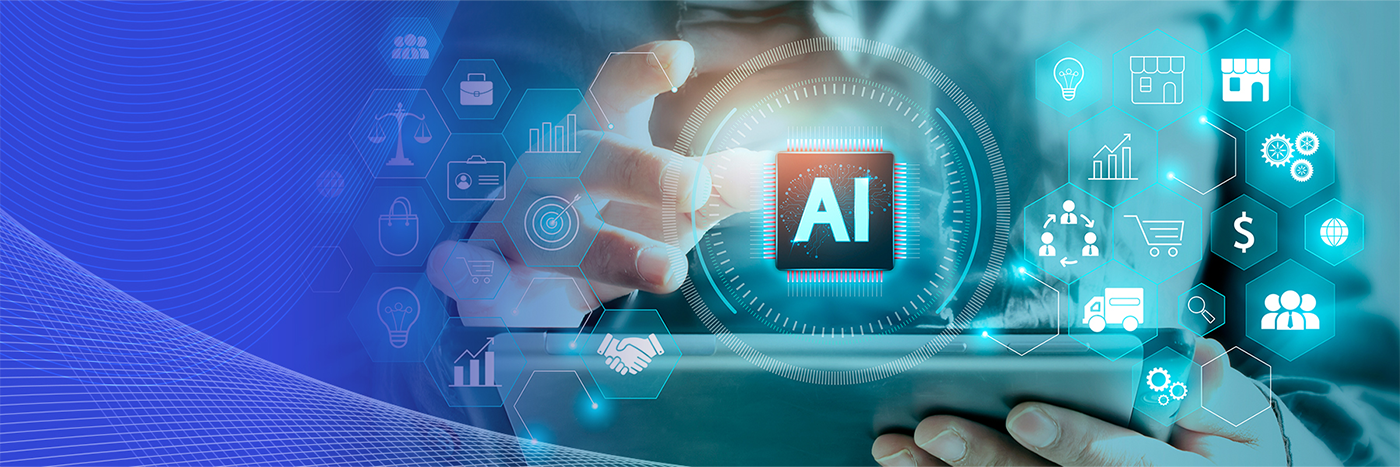
The rise of artificial intelligence (AI) has greatly moved the needle of untapped technology potential. AI is reshaping industries by driving smarter decisions, faster service and stronger customer connections. It signals a major shift in the priorities and budget allocation of organizations, as many race to stay ahead of the curve and adopt new technology and services.
This transformation is particularly evident across healthcare and retail, where AI adoption and usage has grown rapidly over the past twelve months:
In healthcare, AI has expanded outside the scope of simple administrative tasks into broader applications of medical diagnosis and treatment plans. In 2025, 81% of organizations use AI for patient care, a stark increase from 61% in 2024.

In retail, AI is being leveraged to deliver more personalized shopping experiences and enhance customer service by driving consumers to the right products at the right time, avoiding delays and keeping the retail service model moving.
Currently, 47% of global consumers believe that retailers should leverage AI to improve the way items are recommended to them.

While there are a number of strong use cases for AI across these industries—benefitting both the customer and the organization—there is a gap that exists in the promise of AI and the ability for organizations to deploy at scale.
Outdated networks and systems are currently standing in the way of meaningful AI adoption. Without a robust IT infrastructure to support digital transformation efforts, organizations continue to face integration challenges—such as limited device visibility, heightened security risks, and technology delays that reduce customer satisfaction.
As healthcare and retail look to accelerate modernization efforts, the question becomes: how can they unlock the full potential of AI?
The Healthcare Crisis: Legacy Systems & the Need for Change
Healthcare has long struggled with legacy IT systems—aging infrastructure that is costly to maintain, difficult to integrate, and vulnerable to security threats. According to SOTI’s 2025 global healthcare report, the percentage of IT decision makers whose organizations use outdated technology dropped from 63% in 2024 to 55% this year. Yet, 97% still report that their organization has legacy technology, and around half of those using legacy technology don’t consider it obsolete.
However, the consequences of using outdated systems include:

-
Security Risks that compromise patient data. 45% of respondents say legacy systems make networks vulnerable to attack, and 83% have experienced an accidental data leak, external data breach or DDoS ransomware attack in the past 12 months.
-
Interoperability Challenges that limit an organization’s ability to access real-time patient data. Almost two-thirds (65%) of organizations use unintegrated, outdated systems for IoT and telehealth medical devices, and 96% experience challenges implementing IoT and telehealth medical devices.
-
Compliance Issues that limit an organization’s ability to access real-time patient data. Almost two-thirds (65%) of organizations use unintegrated, outdated systems for IoT and telehealth medical devices, and 96% experience challenges implementing IoT and telehealth medical devices.
-
Operational Inefficiencies that impact the quality of patient care. 59% of organizations have experienced frequent technical issues/downtime using IoT and telehealth medical devices, and 90% call for more investment in new or better technology to improve patient care.
Modernizing these systems is no longer optional—it’s a strategic imperative. As highlighted in a blog by IndiBlogHub, upgrading to modern IT platforms improves scalability, enhances patient experiences, improves operational efficiency, and enables seamless integration with emerging technologies like AI.
The Digital Shift: Electronic Medical Records (EMRs) & Electronic Health Records (EHRs)
One of the most impactful changes in healthcare has been the adoption of EMRs and EHRs. As Under30CEO explains, EHRs eliminate the inefficiencies of paper-based systems by giving healthcare providers instant access to patient data and improving communication between doctors, nurses, and specialists. It also enhances patient engagement through automatic reminders, accessible patient data, streamlined intake processes, and simplified prescription refills.
While EMRs and EHRs can drastically improve healthcare operations and patient quality, the real transformation comes when AI is layered on top of these digital systems: EMRs and EHRs move from record-keeping tools to predictive engines that enable early disease detection, personalized treatments and proactive patient care.
However, before AI can truly be leveraged, healthcare organizations need to address the core problem of EMR and EHR adoption: 79% of IT decision makers say that the adoption of EMRs has been a significant challenge for their organization, and 36% attribute this directly to the legacy system they have in place.
Retail’s AI Revolution: Personalization at Scale
Retail is all about improving the consumer experience, and the integration of AI with social commerce revolutionizes how brands engage with their consumers and personalize this experience.
Social commerce allows users to research and purchase products directly within social media platforms such as Instagram, Facebook, and TikTok. Highlighted in Forbes, social commerce is projected to reach $1.2 trillion by 2025.
What complements the rise in digital shopping is the underlying technology enhancing it. Currently, AI is being leveraged to:
-
Personalize shopping experiences through recommendation engines. According to SOTI’s 2025 retail report, almost two-thirds (64%) of consumers prefer personalized recommendations based on past purchases, a significant increase from the previous year (30%). This is particularly highlighted by the fact that 52% favor online retailers that use technology to personalize shopping experiences.
-
Optimize inventory with predictive analytics and reminders. The majority (62%) of consumers say they appreciate reminders when products are running low, which is up 24% from 2024.
-
Enhance customer service via chatbots and curated memberships. Over one-third (37%) of consumers would be receptive to conversational shopping assistants, and 65% are interested in memberships that offer tailored deals.
By empowering retailers to deliver real-time, personalized experiences—through tailored offers and content—AI helps drive sales and foster long-term customer loyalty.
It’s not just social commerce that gets a boost from AI, it’s the entire retail ecosystem—namely, omnichannel. Another Forbes article notes that retailers must create seamless coordination between channels rather than simple presence across platforms. To unify thousands of micro interactions across multiple channels, AI helps process this data to further deliver personalized shopping experiences, whether in-store or online.
However, this rapid transformation comes with a tradeoff. There is little security behind social media platforms and across retail channels to help safeguard consumer data, where speed of delivery and trend-driven purchases outweigh the protection of personal information.
Personalization Paradox: Why Consumers Crave Customization but Fear Sharing Data
Although AI continues to drive hyper-personalized experiences in retail, a growing tension with consumers has emerged: they desire tailored services, yet they fear sharing personal data online. Frankly, their fear is warranted. Over a quarter (29%) of consumers have fallen victim to fraud.
Trust is a major factor when purchasing online. While the benefits of social commerce can’t be overlooked, 82% of retail shoppers worry about entering their personal data online or into in-store devices, with 71% highlighting concerns about the security of their personal details, and 67% worrying about data security when shopping on social media. Interestingly, 61% are particularly concerned about small retailers’ ability to keep personal data and payment secure.
The fear of data misuse, breaches, or fraud is real—and growing. Over half (60%) of consumers have abandoned an online purchase due to distrust of payment systems.
Part of the issue is retailers often have fragmented systems that lack the security needed to protect sensitive customer data, which is amplified by:
-
The lack of transparency around how data is collected and used
-
Inconsistent privacy policies across platforms
-
High-profile data breaches that erode trust
By leveraging the right software, retailers can safeguard consumer data by locking down mobile devices to prevent unauthorized access, implementing multi-factor authentication (MFA) for specific user log in, and applying certificates on devices that need renewal.
The Infrastructure Imperative: Building the Foundation for AI
AI’s potential is limitless—but only if the underlying infrastructure can support it. Unfortunately, many organizations are still playing catch-up.
In healthcare, the absence of a modern IT infrastructure remains a significant barrier to AI adoption. The same is true in retail, where fragmented systems and siloed data limit the effectiveness of AI tools and increase consumer concerns around data privacy.
To fully realize the benefits of AI, organizations must:
-
1. Modernize legacy systems to ensure compatibility and security
-
2. Invest in cloud-native platforms that offer scalability and flexibility
-
3. Ensure data interoperability across systems and departments
-
4. Embed cybersecurity into every layer of the tech stack
-
5. Train teams to use AI tools effectively and ethically
Conclusion: A Smarter, More Personalized Future
AI is not just transforming industries, it’s redefining them. In healthcare, it’s enabling faster diagnoses and curated patient care. In retail, it’s delivering hyper-personalized experiences that drive loyalty and growth while prioritizing security. But none of this is possible without modern IT infrastructure.
As organizations move forward, the message is clear: AI is the future—but only if we build the right foundation today.



